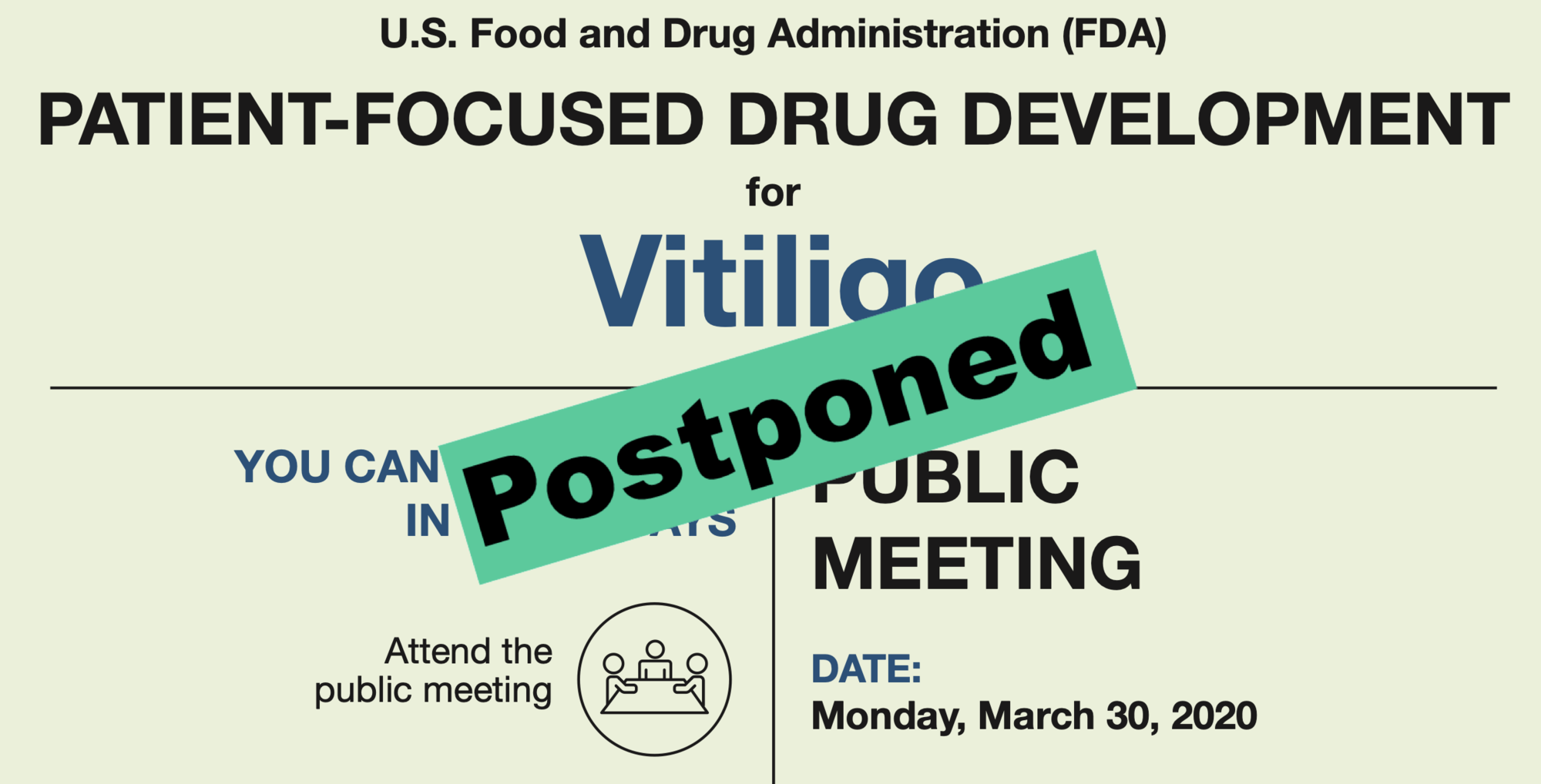New
-- POSTPONED -- FDA's first public meeting on vitiligo
Due to extenuating circumstances, this MEETING IS POSTPONED until further notice.

On Monday March 30, 2020, FDA is conducting its first public meeting on Patient-Focused Drug Development for Vitiligo.
The meeting is intended to allow FDA to obtain patient perspectives on the impact of vitiligo, including on daily life, patient views on treatment approaches, and decision factors taken into account when selecting a treatment.
You can participate in three ways:
- Register, attend the meeting and take active part in discussions.
- Join webcast and comment throughout the live stream.
- Submit your online comments before the meeting.
WHEN: Monday, March 30, 2020 at 1 p.m. to 5 p.m.
WHERE: FDA White Oak Campus 10903 New Hampshire Ave. Building 31, Great Room Silver Spring, MD 20903
DISCUSSION QUESTIONS
Topic 1: Health effects and daily impacts that matter most to patients
- Which aspects of vitiligo have the most significant impact on your life? (Examples may include depigmentation, itching, sensitivity to sunlight, etc.)
- Are there specific activities that are important to you but that you cannot do at all or as fully as you would like because of your vitiligo? (Examples of activities may include participating in social events, sports, being outside in the sunlight, etc.) How does your vitiligo and its impacts affect your daily life on the best days? On the worst days?
- How has your vitiligo changed over time? How has your vitiligo changed from childhood to adulthood (such as vitiligo severity, disease acceptance)? Would you define your vitiligo today as being well-managed?
- What worries you most about your vitiligo? Is there a particular body area affected by vitiligo (such as face, hands, limbs) that is of most concern to you?
Topic 2: Patients’ perspectives on current approaches to treatment
- What are you currently doing to help treat your vitiligo? (Examples may include prescription medicines, over-the-counter products, and other therapies including non-drug therapies such as diet modification.) How has your treatment regimen changed over time, and why?
- How well does your current treatment regimen treat the most significant aspects of your vitiligo? For example, how well do your treatments improve your ability to do specific activities?
- What are the most significant downsides to your current treatments, and how do they affect your daily life? (Examples of downsides may include bothersome side effects, depigmentation of affected area is more noticeable, going to the hospital for treatments, etc.)
- Assuming there is no complete cure for your vitiligo, what specific things would you look for in an ideal treatment for your vitiligo? Is there a particular body area affected by vitiligo (such as face, hands, limbs) that you would prioritize for treatment?
- What factors do you consider when making decisions about selecting a course of treatment?
FAQOther Questions
- What tests for vitiligo should be done?
Before starting vitiligo therapy, several tests may be recommended to ensure an accurate diagnosis and appropriate treatment plan: Physical Examination A thorough physical exa...
- PTSD in Vitiligo?
Living with vitiligo often involves more than managing visible skin changes. Many individuals face discrimination, social stigma, and feelings of isolation, leading to emotional...
- Can chemicals cause vitiligo?
Certain chemicals can trigger vitiligo, leading to a condition known as chemical-induced vitiligo. While clinically and histologically indistinguishable from other types of viti...
Though it is not always easy to treat vitiligo, there is much to be gained by clearly understanding the diagnosis, the future implications, treatment options and their outcomes.
Many people deal with vitiligo while remaining in the public eye, maintaining a positive outlook, and having a successful career.
Copyright (C) Bodolóczki JúliaBy taking a little time to fill in the anonymous questionnaire, you can help researchers better understand and fight vitiligo.
